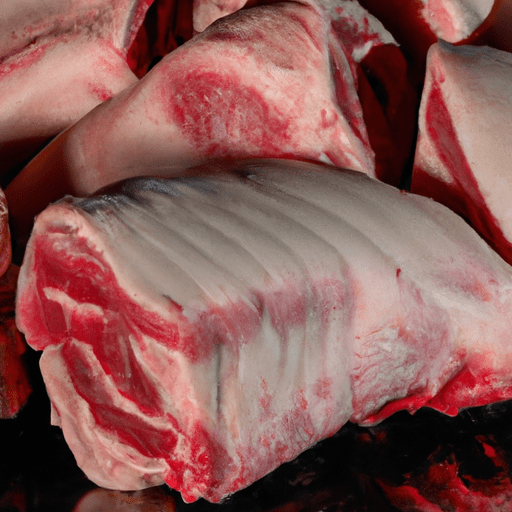Exploring the Delights of Wild Boar Tenderloins
Wild boar tenderloins, known for their rich flavor and tender texture, are a culinary delight that has been relished by food enthusiasts for centuries. Whether roasted, grilled, or used in stews and game dishes, these succulent cuts of meat bring a unique and unforgettable taste to the table. In this article, we will delve into the world of wild boar tenderloins, exploring their taste, common uses in cooking, nutritional value, as well as some interesting history and facts.
A Taste Sensation
Describing the taste of wild boar tenderloins is no easy feat, as it possesses a flavor profile that sets it apart from other meats. Its taste can be described as bold, intense, and earthy, with slightly sweet and nutty undertones. The meat tends to be lean and dense, resulting in a firm yet tender texture. The unique taste of wild boar is often compared to a combination of rich pork and high-quality beef, making it a favorite amongst adventurous food connoisseurs.
Creative Culinary Applications
Wild boar tenderloins are highly versatile and lend themselves to a variety of culinary applications. Due to their robust flavor, they are often served as the centerpiece of gourmet dishes. Roasting the tenderloins whole with aromatic herbs and spices elevates their natural flavors, resulting in a mouthwatering experience. Alternatively, they can be sliced into medallions and grilled or pan-seared to perfection, allowing their tender texture to shine.
The richness of wild boar tenderloins pairs exceptionally well with ingredients such as red wine, garlic, rosemary, juniper berries, and tart fruits like cranberries or cherries. These complementary flavors help balance the meat’s intensity, creating a harmonious culinary ensemble. Wild boar tenderloins also lend themselves well to slow-cooked stews and ragouts, where they can impart their flavors into hearty, rustic dishes.
Nutritional Value and Health Benefits
Wild boar tenderloins offer more than just an indulgent culinary experience; they also boast several nutritional benefits. As a red meat, they are a great source of high-quality protein, essential for muscle growth and repair. Wild boar is generally leaner than conventional pork, making it a favorable choice for those looking for a healthier protein option.
In addition to protein, wild boar tenderloins are a good source of essential vitamins and minerals. They are particularly rich in iron, which plays a crucial role in transporting oxygen throughout the body, and zinc, which aids in metabolism and immune function. Moreover, wild boar meat contains beneficial omega-3 fatty acids, known for their heart-healthy properties.
A Historical and Fascinating Past
While wild boar tenderloins are a delightful treat on modern dining tables, their history extends far beyond contemporary culinary trends. Wild boars have long been an integral part of traditional European and Asian cuisines, symbolizing abundance, strength, and prosperity. They were often hunted by ancient civilizations and were featured prominently in feasts and celebratory meals.
In medieval times, wild boar hunting became a cherished sport for nobility and royalty. The boar’s head was even considered a symbol of power and authority. Over time, as hunting practices evolved, wild boar meat became more accessible to commoners, leading to an increased popularity of dishes featuring these mouthwatering tenderloins.
Fun Facts about Wild Boar Tenderloins
To conclude our exploration of wild boar tenderloins, here are a few intriguing facts:
- Wild boars are known for their intelligence and adaptability, making them skilled survivalists in various habitats.
- Some claim that wild boar meat has a sweeter taste when the boars have been feasting on fallen acorns or chestnuts.
- Wild boar tenderloins are often considered a gourmet delicacy due to their scarcity and the skill required to hunt them.
Take Your Culinary Adventures to New Heights
Incorporating wild boar tenderloins into your culinary repertoire is an excellent way to explore new flavors and elevate your cooking skills. Whether you choose to roast, grill, or stew these exquisite cuts of meat, their distinct taste and tender texture are sure to impress your guests and create a memorable dining experience. So, why not embark on a culinary adventure and savor the unmatched delights of wild boar tenderloins?
Wild Boar Tenderloins
- Origin: Wild boar tenderloins come from the meat of wild boars, which are native to Europe, Asia, and North Africa. They were first domesticated around 13,000 years ago in what is now modern-day Turkey.
- Common Uses: Wild boar tenderloins are highly regarded for their rich flavor and lean, tender meat. They are often used in gourmet cooking and can be prepared in various ways, including grilling, roasting, sautéing, or smoking. Due to their gamey taste, they are frequently marinated to further enhance the flavor.
- Nutritional Benefits: Wild boar tenderloins provide several nutritional benefits. They are low in saturated fat, making them a lean source of protein. They are also rich in minerals such as iron and zinc, as well as vitamins, including vitamin B6 and niacin.
- Unique Properties: Compared to pork tenderloins, wild boar tenderloins typically have a deeper, more intense flavor. This is because wild boars are more active and forage for their food, resulting in leaner meat with a distinct gamey taste. The meat is darker and has a coarser texture compared to domesticated pork.
- Historical Significance: Wild boars have played significant roles in various cultures throughout history. In ancient Greek and Roman mythology, the wild boar was often associated with hunting and was even featured in myths and legends. It was considered a symbol of strength and courage. In medieval Europe, wild boar hunting was a popular sport among the nobility and often served as a display of prowess and valor. Today, wild boar hunting remains a recreational activity in certain regions.




Use the share button below if you liked it.
It makes me smile, when I see it.